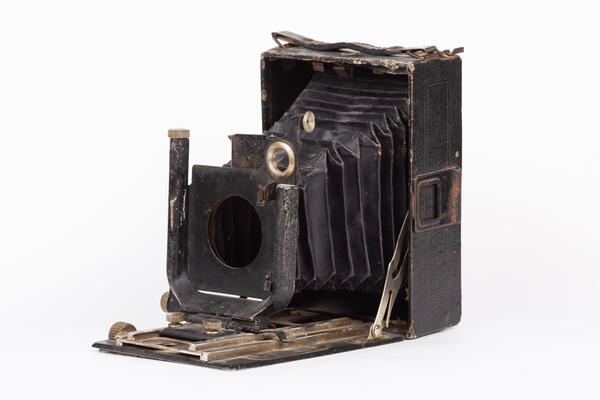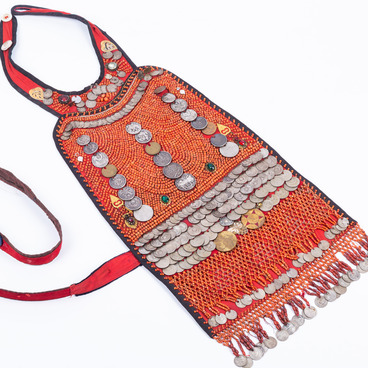The ‘FotokOr #1’ camera is a plate folding camera of the 1930s–1940s. It was also called Fotokor-1, or just Fotokor. This model was the first mass camera of the Soviet Union: during 11 years of series production, over one million copies were manufactured.
The folded camera was 16 centimeters long, 11.5 centimeters high, and 6.4 centimeters deep. It weighed slightly over one kilo. All metal parts were chrome-plated and nickel-plated. The case was covered with black faux leather. In its upper part, there was a leather strap handle with an embossed inscription ‘Fotokor #1.’ The camera was also supplied with a hard leather case.
The manufacturer described Fotokor #1 as a ‘universal’ camera. The camera had a quite wide range of available exposure values and therefore made good shots not only during the pavilion shooting from a tripod, but also in a wide variety of lighting conditions.
Fotokor #1 was brought into focus with a double-extension bellow. It was a unique mechanism for the Soviet camera designing. To prepare the camera for shooting, the lens stand was extended using the slide. Then, the slide was moved with a ribbed nickel-plated roll providing fine motion.
The focus was adjusted using a matte glass in the back wall of the camera. After setting the sharpness of focus, selecting aperture and shutter values, the back wall of the body with matte glass was replaced with a photographic plate cassette. Metal cassettes were both one-sided and two-sided. Photographic plates for Fotokor #1 were made of glass with the size of 9 cm x 12 cm. After the plate was installed, a slide (a shutter) covering the plate was removed. So the camera was ready for operation.
The technology allowed using Fotokor #1 not only for reproduction, but also for close-up photography. The movable lens mount allowed photographers shooting architecture from different angles without perspective distortion.
These cameras were equipped with a film pack adapter and a liquid level. The level was mounted on a reflex viewfinder to bring the camera to the ideal horizontal position.
The folded camera was 16 centimeters long, 11.5 centimeters high, and 6.4 centimeters deep. It weighed slightly over one kilo. All metal parts were chrome-plated and nickel-plated. The case was covered with black faux leather. In its upper part, there was a leather strap handle with an embossed inscription ‘Fotokor #1.’ The camera was also supplied with a hard leather case.
The manufacturer described Fotokor #1 as a ‘universal’ camera. The camera had a quite wide range of available exposure values and therefore made good shots not only during the pavilion shooting from a tripod, but also in a wide variety of lighting conditions.
Fotokor #1 was brought into focus with a double-extension bellow. It was a unique mechanism for the Soviet camera designing. To prepare the camera for shooting, the lens stand was extended using the slide. Then, the slide was moved with a ribbed nickel-plated roll providing fine motion.
The focus was adjusted using a matte glass in the back wall of the camera. After setting the sharpness of focus, selecting aperture and shutter values, the back wall of the body with matte glass was replaced with a photographic plate cassette. Metal cassettes were both one-sided and two-sided. Photographic plates for Fotokor #1 were made of glass with the size of 9 cm x 12 cm. After the plate was installed, a slide (a shutter) covering the plate was removed. So the camera was ready for operation.
The technology allowed using Fotokor #1 not only for reproduction, but also for close-up photography. The movable lens mount allowed photographers shooting architecture from different angles without perspective distortion.
These cameras were equipped with a film pack adapter and a liquid level. The level was mounted on a reflex viewfinder to bring the camera to the ideal horizontal position.



